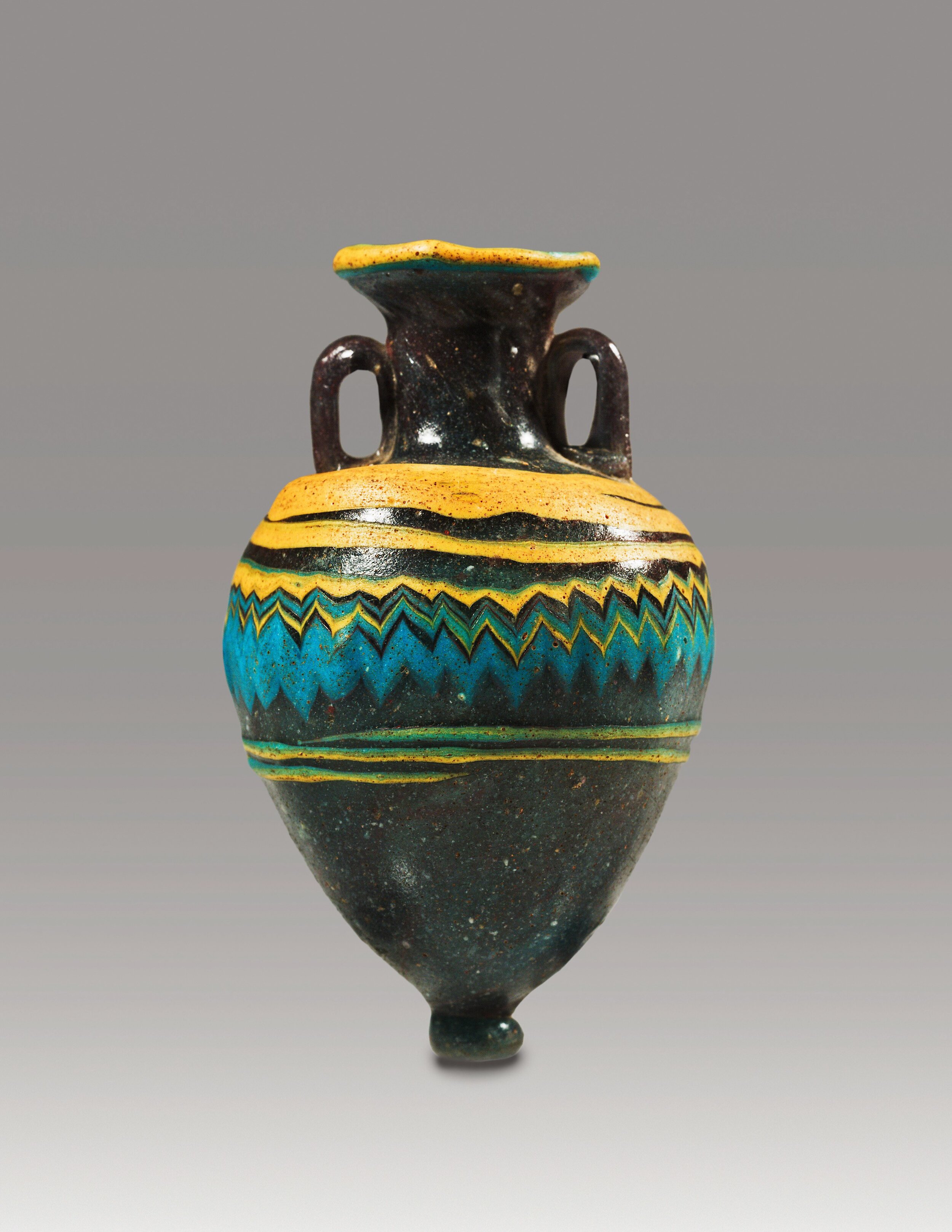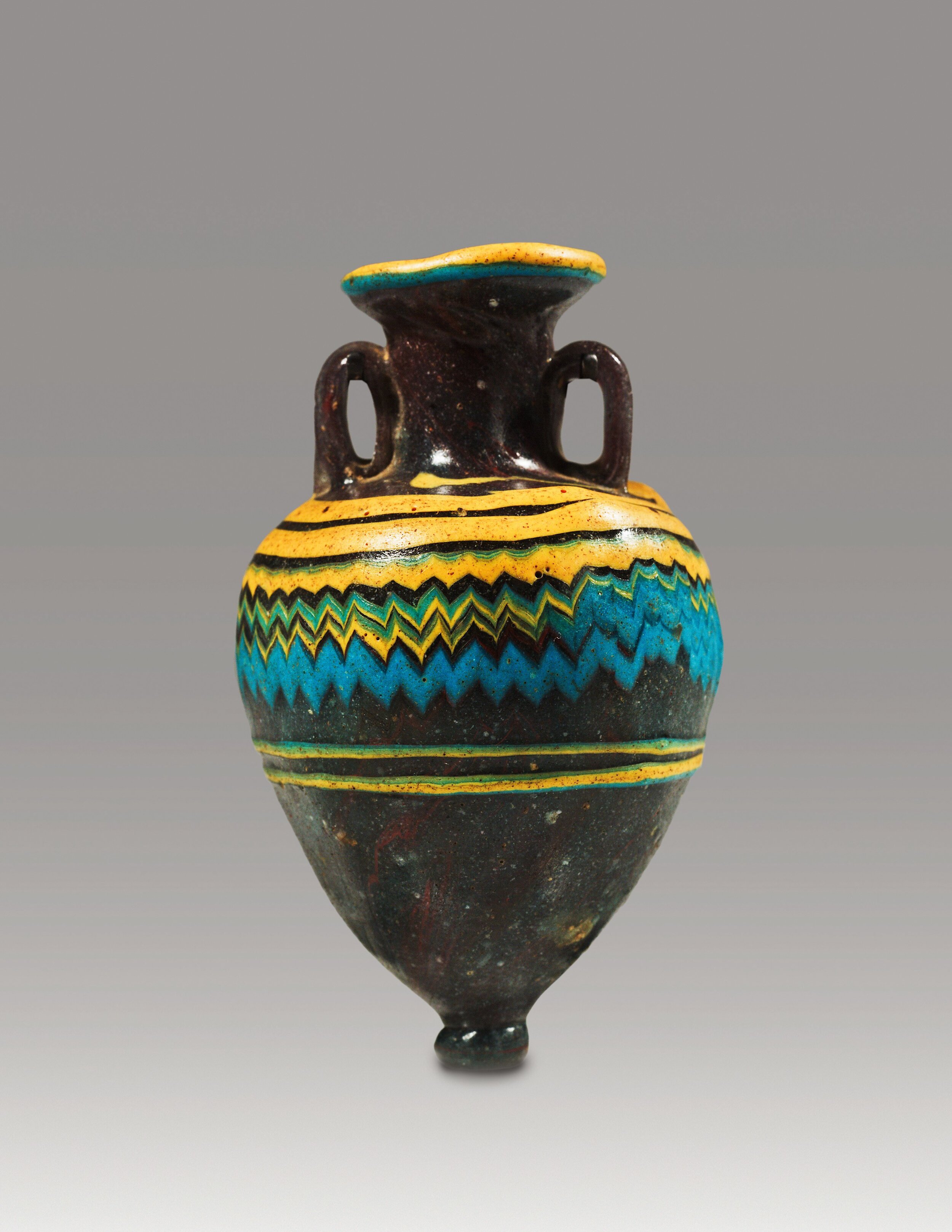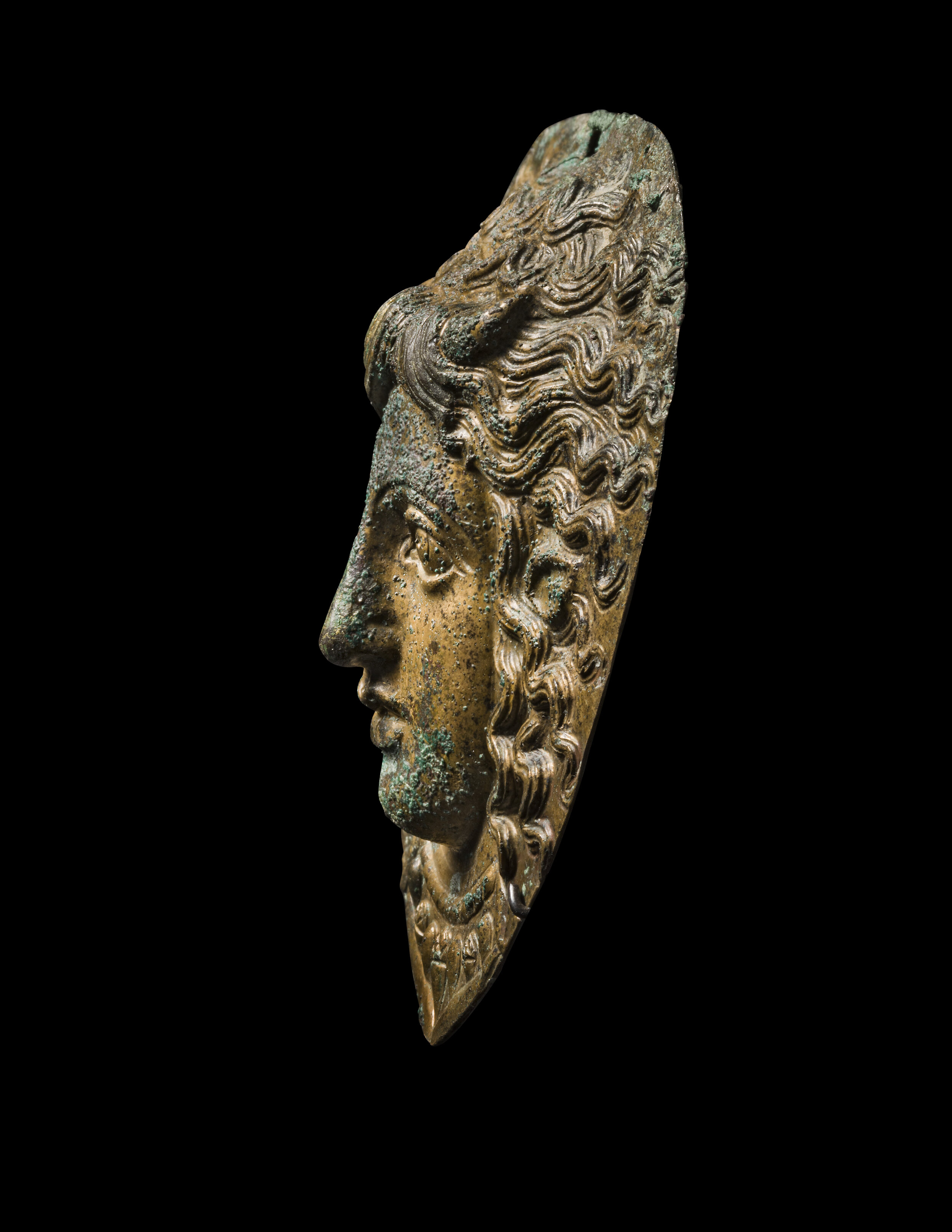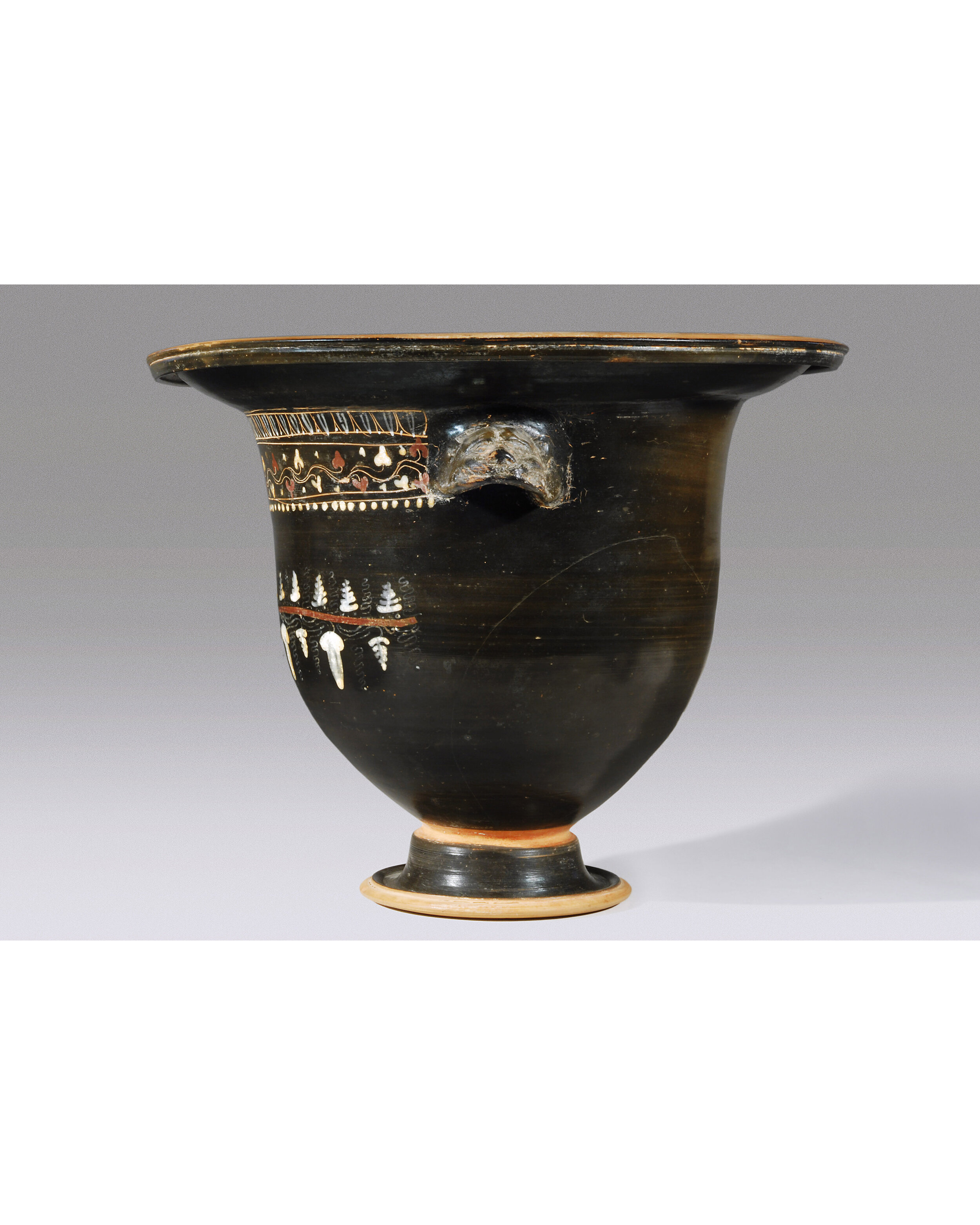Ancient Greek Core-Formed Glass Amphoriskos




Ancient Greek Core-Formed Glass Amphoriskos
Greek, 5th Century B.C.
Glass
H: 7.2 cm; D: 4.45 cm
PROVENANCE: Private collection, acquired in late 1980's
SERIAL NO: 3750
This amphoriskos, or “miniature amphora,” is a bottle that contained scented oils or perfume. The custom of using delicately made glass vessels to hold valuable commodities began in the late Bronze Age in western Asia and Egypt, and was revived in Mesopotamia in the early Iron Age. Their small size and pleasantly rounded shape makes it possible to hold these vessels comfortably in one’s hand. The shape also occurs in terracotta, and rarely, metal, but ultimately this form copies that of the large transport amphorae of 6th century B.C. date, which were used for distribution of wine and olive oil throughout the Mediterranean.
Resting on a knob base, this finely designed and beautifully decorated amphoriskos is made of a deep cobalt-blue glass. Ovoid in shape, the amphoriskos is pointed at the base, with rounded shoulders, a cylindrical neck and inward sloping disk rim. Threads of opaque yellow glass wind spirally around the body, beginning at the neck of the amphoriskos, which is yellow on one side; a larger thread of opaque turquoise glass encircles the body at its widest point, and has been combed with a tool into a zigzag pattern along with threads of yellow glass. A yellow and turquoise thread of glass is applied to the edge of the rim; handles of translucent blue glass extend from the shoulder to the neck, just below the rim.
The core-forming technique of glass manufacture consists of building up a core of removable material – probably a mixture of clay, mud, sand and an organic binder – around a metal rod. The core is then covered with molten glass, either by dipping or by trailing a thread of glass over the core as it is rotated. The vessel is repeatedly reheated and marvered, or rolled, on a flat stone slab. Decoration in the form of glass threads is then trailed on and pressed into the surface by marvering, usually after being combed or dragged with a metal pin or hook into a zigzag, feather, or other pattern. The metal rod is subsequently removed and the vessel is annealed. After the core is scraped out, the rim, handles, and base-knobs are applied after further reheating.









